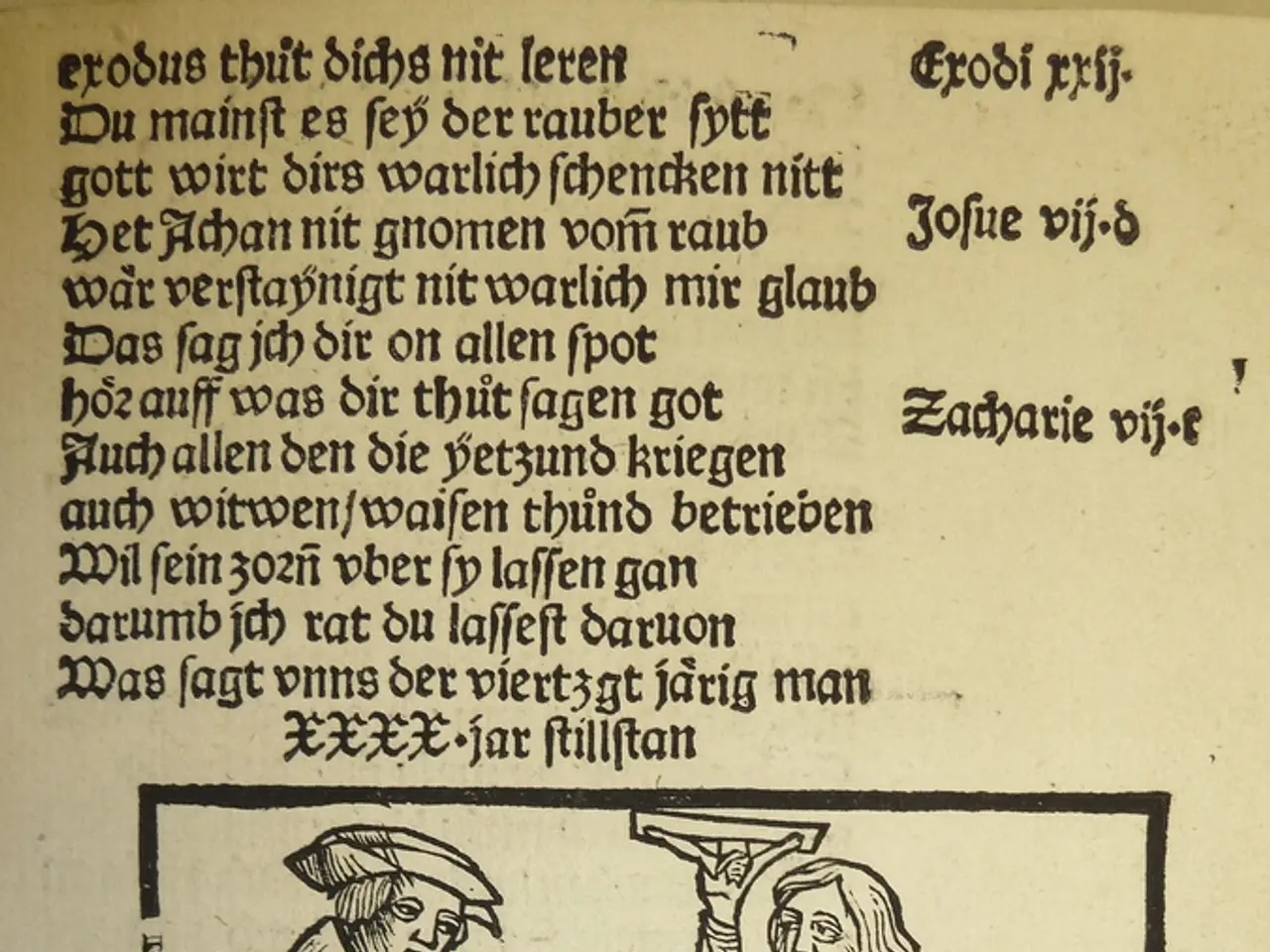Federal Ministries Lack Representation of Both Genders
The German federal government's approach to gender-inclusive language is a topic of ongoing debate and variation. Recently, the Minister of State for Culture, Wolfram Weimer, announced a ban on gender-inclusive language forms, such as asterisks (*) or internal capitalization, in official communications within his department. This decision affects around 470 employees under his authority and is a stance against "forced gendering" in official language to avoid societal division[1][3].
However, it appears that this ban is specific to the Ministry of Culture and does not represent a uniform federal policy across all government branches. Other government areas, such as the Chancellery and other federal ministries, continue to apply gender-neutral language following common forms and official guidelines, albeit not using asterisks[5].
In terms of the use of special characters, the current official policy within the Federal Minister of Culture's office rejects these forms. The Council for German Orthography supports using traditional grammar and orthographic standards rather than gender-inclusive innovations involving special characters[1].
The debate over gender-inclusive language in formal German settings is active and contested, balancing traditional grammar norms against evolving social inclusivity aims[2][4]. Some universities and public bodies have published progressive recommendations for gender-inclusive language, including non-binary forms, to promote clear and inclusive communication[4].
The new guideline for gender-inclusive language in Germany, effective since early July, is applicable to schools and public administration. The focus on special characters is a part of the ongoing efforts to promote inclusive and clear communication in Germany. The guideline prioritizes grammatically correct language[2].
Despite the new guideline, it seems that the Chancellery is not following it, as stated by Culture Minister Wolfram Weimer. The development of the use of special characters in the new guideline is still being monitored[1].
Summary of Official Guidelines and Practices:
- General official federal culture office policy: Ban on gender-inclusive language forms (e.g., asterisks, Binnen-I). Use traditional salutations.
- Use of special characters in official documents: Not allowed in the culture ministry. Aligned with Council for German Orthography.
- Other federal ministries / chancellery: Use common gender-neutral language forms per official guidelines but not asterisks (exact forms vary).
- Private use: Free expression allowed; not regulated by government policy.
- Universities and some public bodies: Published progressive recommendations for gender-inclusive language including non-binary forms.
Thus, there is no single, unified, federal guideline that mandates or fully prohibits gender-inclusive language or special characters across all German government bodies. The most notable formal restriction is in the Federal Minister of Culture's office, which explicitly forbids such usage in official communications[1][3][5].
[1] Bild am Sonntag [2] Deutsche Welle [3] Tagesspiegel [4] University of Potsdam [5] German Federal Government
- The ban on gender-inclusive language forms, such as asterisks and internal capitalization, is not a uniform policy across all German government branches; other federal ministries and the Chancellery continue to apply gender-neutral language following official guidelines, albeit not using asterisks.
- In contrast to the Federal Minister of Culture's office, which forbids gender-inclusive language or special characters in official communications, universities and some public bodies have published recommendations for gender-inclusive language, including non-binary forms, to promote clear and inclusive communication.








